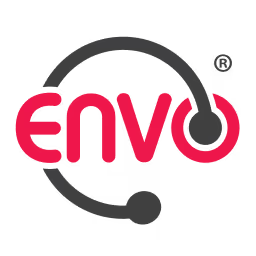Should I Outsource Customer Service? (Expert’s Take)

Customer service represents the crucial frontline interface between an organisation and its clientele, serving as a defining factor in building and maintaining positive customer relationships. In fact, approximately 89% of consumers report they are more inclined to make a subsequent purchase from a business after experiencing great customer service, showcasing the direct return on investment in this crucial function.
Conversely, a consistently poor support experience can be severely detrimental, given that nearly 60% of people will stop using a service or product if the customer service experience is inadequate.
As a business expands, ensuring that the customer service team can maintain a high standard becomes increasingly challenging, compelling organisations to assess whether to develop an internal team (in-house) or engage an external provider (outsourcing).
Should You Outsource Customer Service?
The central dilemma in choosing a customer service model revolves around the trade-off between control and expense. In-house operations offer more direct control, better quality assurance, and clearer communication, but they require a greater financial commitment. Outsourcing, on the other hand, can be cost-effective and increase efficiency, yet it requires sacrificing a degree of control over daily processes and standards.
Explore how ENVO BPO helps businesses scale with agile, multilingual customer service solutions. From first contact to resolution, we deliver support that reflects your brand and exceeds expectations.
Advantages of Outsourcing Customer Service
One of the most compelling reasons to outsource customer service is the potential for significant cost reduction. Outsourcing can reduce costs associated with staffing, training, and a variety of other resources that would otherwise be necessary to complete the project internally. For example, a common practice involves outsourcing customer service lines to different countries to realise savings on staffing costs, with some analyses suggesting that outsourcing can be 40% to 50% cheaper than maintaining in-house teams.
This approach converts fixed operational expenses, such as salaries and office space, into variable costs tied to the volume of service provided, allowing for a pay-as-you-grow model that aligns support spending with revenue milestones.
Furthermore, outsourcing offers immediate access to specialised expertise and increased efficiency. By working with a professional service provider, a company can leverage established systems, trained agents, and refined processes from day one, minimising growth hiccups. This also means less worry about ensuring all the necessary infrastructure and staffing are in place.
Crucially, outsourcing provides superior flexibility and scalability. When demand spikes, such as during new product launches, marketing campaigns, or seasonal peaks, outsourcing partners can rapidly ramp up their capacity, often within hours, circumventing lengthy internal recruitment and training cycles. For businesses aiming for international markets, global providers can offer around-the-clock support across various time zones and in multiple languages, ensuring that customers can always reach a live agent in their preferred language.
Disadvantages of Outsourcing Customer Service
Despite the clear benefits, outsourcing carries substantial drawbacks, particularly concerning control and quality. When agents operate outside the primary organisation, it becomes highly difficult to ensure they fully internalise the company’s brand values, tone, or culture, creating a potential gap that customers may notice and perceive as a hollow experience. This difficulty extends to maintaining the company’s specific ethical codes and standards throughout the entire process.
The loss of communication and control can cause delays, and without the ability to communicate consistently, expectations can slip, potentially leading to a reduction in quality. Additionally, while outsourcing contracts are often short-term, replacing a contractor once a term ends can be difficult, costing valuable time and money while risking a decline in quality.
Advantages of In-House Customer Service
Keeping customer service operations in-house provides greater oversight and allows the company to have more direct control throughout the entire development and service process. This makes it easier to ensure that company culture and values are consistently enacted and that high service standards are met, which strengthens the brand image and customer relationship.
In-house teams benefit from clearer and shorter communication lines to management and product teams. This direct connection allows for continuous feedback, which promotes ongoing improvement and refinement of processes. In-house personnel typically possess the best product knowledge, and having an easily accessible, on-site development team means management can immediately discuss new ideas or necessary changes.
Disadvantages of In-House Customer Service
The primary drawback of running in-house customer service is the cost. Establishing the necessary infrastructure, hiring new staff, managing the team, and ensuring proper training demands a significant financial outlay. This investment can drastically increase the budget, sometimes making the project unviable if costs climb too high.
Staffing issues present another limitation. Potential delays can occur during periods of high demand if the company must find and train new staff to meet requirements. Scaling an in-house team requires significant time and effort, often taking weeks or months to bring new employees up to an acceptable standard. Moreover, if the customer service function requires highly specialised knowledge or training, finding and hiring the necessary employees can be costly and lead to project delays.
Considering Hybrid Models and Strategic Implementation
The decision does not necessarily require an all-or-nothing approach, as many successful companies utilise a hybrid model that combines the benefits of both solutions. A highly effective strategy is partial outsourcing, where the company hands over only the most critical parts of the service or functions for which it lacks in-house expertise or available resources.
This often means outsourcing Tier 1, simple inquiries—such as password resets or billing questions—while retaining complex, high-stakes, or escalation issues in-house with a specialist agent. This approach helps preserve brand control over critical cases while simultaneously reducing overall support costs.
If choosing to outsource, implementing strategic best practices is vital to mitigate risk and maximise value:
- Define Clear Objectives: It is crucial to set clear Service Level Agreements (SLAs) that prioritise quality over volume. Key performance indicators (KPIs) such as Customer Satisfaction (CSAT) and Net Promoter Score (NPS) should be embedded into the SLAs to evaluate performance effectively.
- Ensure Alignment and Quality: Regular quality control checks, such as mystery-shopping exercises, should be carried out to evaluate consistency. Furthermore, companies should aim to align incentives in contracts, ideally tying the vendor’s earnings to business outcomes rather than just a time-plus-materials pricing model.
- Promote Collaboration and Data Sharing: To foster higher-quality support, outsourced agents should be treated as extensions of the internal team. It is essential to provide the outsourced team with direct access to necessary customer histories, CRM data, and knowledge bases to ensure their interactions are contextual and aligned with the company’s brand.
Deliver Exceptional Customer Service with ENVO BPO
As customer expectations evolve, your ability to meet them can define your brand’s long-term success. Whether you're scaling, entering new markets, or simply need to streamline support, finding the right partner matters.
ENVO BPO is Malaysia’s award-winning, ISO-certified BPO provider, trusted by startups and Fortune 500s alike. We deliver scalable, multilingual customer service solutions tailored to your needs — all while aligning with your values, brand, and performance metrics.
Talk to us today — and let’s elevate your customer experience.
Sources
- Indeed Canada – Benefits of In-House vs. Outsourcing (With Definitions) (ca.indeed.com)
- EY Canada – How outsourced managed services providers can help organizations improve internal efficiency (ey.com)
- Forbes – In-House And Outsourced Customer Service: Key Differences, Pros, And Cons (forbes.com)
- The Business Times – Outsource or take it in-house? (businesstimes.com.sg)
- Hubspot – Should Your Startup Be Outsourcing Customer Service? (hubspot.com)
- Boston Consulting Group – How Agile and Outsourcing Can Be Better Together (bcg.com)
- Assembled – The state of support ops in 2025
- MIT Sloan Management Review – Strategic Outsourcing (sloanreview.mit.edu)
- MIT Sloan Management Review – Transformational Outsourcing (sloanreview.mit.edu)
- PwC - Customer experience is everything (pwc.com)
_NoTagline.svg)
